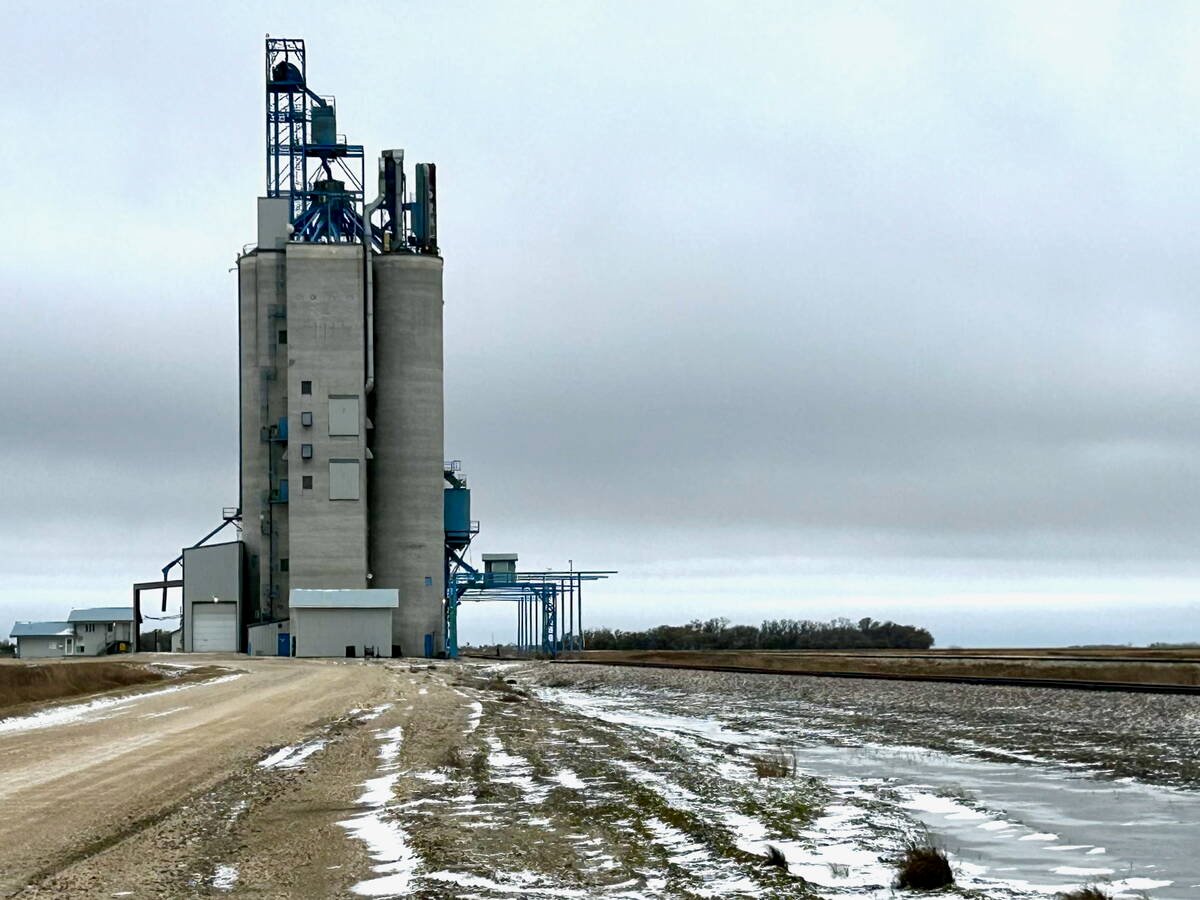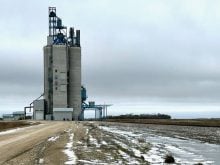This cattle market information is selected from the weekly report from Canfax, a division of the Canadian Cattlemen’s Association. More market information, analysis and statistics are available by becoming a Canfax subscriber by calling 403-275-5110 or at www.canfax.ca.
Loonie strong
The stronger Canadian dollar pressured fed cattle prices lower.
Steer traded $82.45-$83.25 per hundredweight and rail $135.60-$139.30, heifers were $82.10-$82.65 live and $135.60-$139.30 on the rail, said Canfax.
Steers averaged $83.02 per cwt., down $1.13 and heifers were $82.48, down $1.59.
Read Also

Manitoba grain elevator ownership expands
Carman-based Linear Grain buys Fannystelle elevator from Bunge, another three elevators sold to Morden’s BP & Sons Grain and Storage Inc.
The Alberta cash to Nebraska cash strengthened to $7.39 under, compared to the previous week at $8.93 under.
For the week ending July 18, Alberta steer slaughter was 25,835 head and heifer slaughter was 13,505. Total slaughter for Alberta was 46,688 head.
Fed cattle exports to the U.S. for the week ending July 11 totalled 7,456 head compared to 6,621 head in the previous week.
With a steady-to-larger showlist this week and a strong loonie, prices will continue under pressure.
Cows still account for a large portion of auction market volumes.
Cow prices were $39-$55.25 to average $46.41, down $1.68.
Butcher bull trade was $47-$68 to average $58.87, down 77 cents.
Meat prices climb
U.S. slaughter is averaging about 630,000 per week, down from 678,000 last year, pushing beef prices higher, but causing market ready cattle to back up in the system and pressure fed cattle lower
Choice cut-outs rose $6.41 US to close at $143.05 and Select rose $5.83 to $136.74.
Sales features on beef in Canada was considered fairly good among major retailers for top sirloin, rib steak and New York striploins.
The George Morris Centre’s Canadian boxed beef report expects late August features to be on lower priced end meats, but have even more emphasis on pork and chicken.
Consumers continue to eat at home and restaurants are suffering, especially high-end eateries.
The Calgary wholesale market for delivery this week fell $2 to $166. Montreal fell $2 to $176, Canfax said.
Feeders lower
Depending on the region, there was light to moderate offerings of feeder cattle, with prices lower in all weight categories, Canfax said.
In some places, pastures have improved, sending fewer cattle to market, but more rain is needed.
Due to growing-season challenges and the threat of frost before the harvest is complete, feed supplies might increase raising optimism in buying feeders. But with predictions for lower fed prices heading into fall, feedlots are having a hard time making profits. Auction market volumes rose six percent from the week before to 16,388 head. That was one percent below last year.
Year to date auction market volumes are down three percent.
The steer average was $2.14 per cwt. lower and heifers were $1.72 lower.
Feeder cattle exports for the week ending July 11 were 4,846 head compared to 1,198 head the previous holiday shorted week.
Prices should trade steady to lower next week, while volumes could get larger depending on the weather.
Cow-calf pairs traded at $1,021.25, down $58.65 from the week before. Pairs might be split again depending on the quality of the cows and age of the calves.
Hogs mostly steady
Pork stocks in the U.S. were at a record high for June.
Average carcass weights are 267 pounds, up five lb. from last year at the same time.
In Canada, prices were pressured lower by the strong loonie.
Iowa-southern Minnesota cash hogs were $44 US per hundredweight on July 24, $1 higher than July 17.
The U.S. pork carcass cut-out value climbed to $66.70 July 21, but closed July 24 at $65, down from $65.63 July 17.
U.S. federal slaughter to July 25 was estimated at 2.03 million, up from 1.95 million the previous week. Compared to the same week last year, slaughter was down 4.7 percent.
Bison age an issue
The Canadian Bison Association said markets are diverging on the 30 month age rule. Marketers feel this will continue into the fall. Prices have climbed slightly on these classes, however slaughter cows and bulls dropped back five cents.
Grade A carcasses from bulls younger than 30 months in the desirable weight range in Canada were $2.60-$2.75 per lb. hot hanging weight.
Those older than 30 months were $2.40-$2.65.
Heifers younger than 30 months were $2.40-$2.65 per lb., while those older than 30 months were $2.25-$2.55 per lb.
The cull cow and bull average was lower at $1.35 per lb.
Weight, quality, age and delivery location affect final price.
Lambs stronger
Ontario Stockyards reported 1,246 sheep and lambs and 83 goats traded July 20. Well finished lambs were $1-$2 per cwt. higher. All other sheep lambs and goats were steady.














